
The Stara Zagora Region – Stara Zagora, Kazanlak, Pavel Banya & Around
I am probably a little biased as this is the region I chose to settle but there is so much to see and do around here and being right in the centre of the country, we are well placed for visiting Plovdiv and the Rhodophes, Sofia and the Rila mountains, the Balkans and Veliko Turnovo, Sliven and the coast.
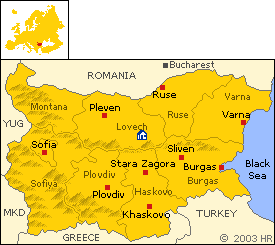
The Stara Zagora region has one of the best climates in Bulgaria because of the southern location and because the Balkan Mountains serve as barrier for the winds from North, although snow still covers the mountains in the winter the region does not usually get as much snow or bad weather as the north of the country and has long, hot summers.
The economy for the region is fairly well developed which is an important consideration given that many rural areas of Bulgaria are still very poor. So you have nice combination of large cities within easy reach with all the amenities you would expect of a modernised society and rural properties in traditional villages.
One of the main motorways in Bulgaria runs directly to this region from Sofia to Stara Zagora on its way through to Burgas at the coast. The airport in Sofia is just less than 200 km away from Stara Zagora and about 2 and half hours.
The Burgas airport (on the coast) is 180 km away from Stara Zagora and Plovdiv airport is only around an hour away. The region as an excellent central location and the Sea, Greece, Turkey, the capital, Sofia etc are all within easy travelling distance.
The motorway goes all the way from the capital to Burgas and so you can traverse the country in around 4 to 5 hours. Several Pan European Transport Corridors run through Stara Zagora and because of this there is an active and strong business market in the area and much EU funding.
Various international firms have opened multi million euro facilities and developments in the area. New technology parks are being built as well as superstores, housing complexes and so on.
This sustainable economic growth gives the region good opportunity for long term investments.
Stara Zagora is the 5th largest city in Bulgaria and the main city in the region and has a medical university with university clinics and so there is a high level of health service.
There is also a veterinary university. It has a lovely pedestrianised centre with many street cafes and restaurants, an opera theatre, Roman ruins, neolithic remains and more.
I usually hate cities, being a country girl at heart, but I think it is a nice small city and on summer evenings the streets are lined with chairs and tables for outside dining, there are some lovely restaurants and bars, large supermarkets and a fantastic park. Many of the residents of Stara Zagora, especially in the summer, head for the park to meet friends, sit and eat and drink or take the children to play.
Below are a number of pictures showing different aspects of the city – the typical high rise blocks on the outskirts, the modern shopping centres, tree lined streets, Roman ruins…..
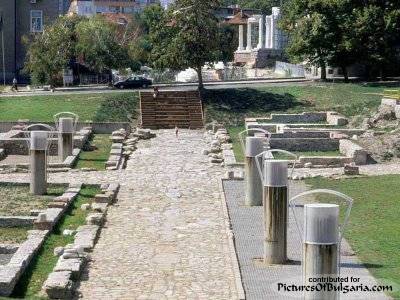
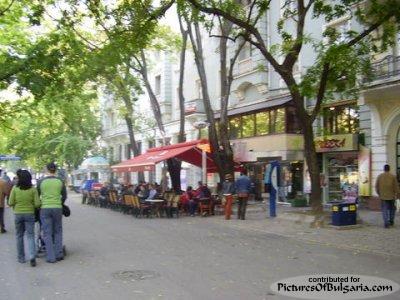
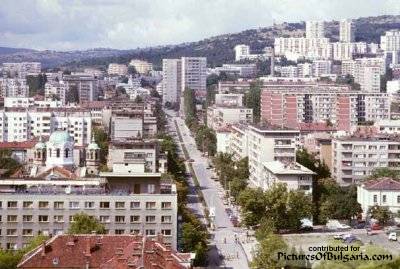
The city is one of the oldest in Europe with two Neolitich dwellings dating back to the 6th century B.C and it was also an important Roman town founded in the 2nd century A.D.
Much Roman architecture still remains from the amphitheatre, large mosiacs and other ruins. In 1364 the city was conquered by the Ottoman rule and during the fighting for liberation from the Turks, it was the scene of a major battle which resulted in the entire city being burnt to the ground and thousands killed.
The city was then rebuilt on a grid structure and so practically every street except one is in a straight line and makes finding your way around fairly easy.
During the construction of the large hospital in Stara Zagora in 1969, several Neolithic Houses were excavated.
These date back to 5500 BC and two dwellings remain preserved as they were found. The houses have been covered by a building to house the small museum and preserve the findings, such as pottery and household implements.
English language tours can be arranged by appointment and the museum is open most days. The post office also houses an impressive Roman mosaic on the ground floor.
There are a couple of museum houses, open by appointment to the public and showing how people lived during the National Revival period.
There is the Museum of Nineteenth-Century Town Life very close to the centre and the Geo Milev House-Museum about the poet who was killed for his poem about the 1923 Uprising.
The Stara Zagora Opera is the oldest and most prestigious opera company in Bulgaria.
Above the city, on the east side, is the TV Monument, there is the tall old TV receiver for analogue TV but also a monument to a major battle for the city of Stara Zagora, when the Russians and Bulgarians stood (unsuccessfully) against the Turks.
The city itself has several Billa supermarkets, Kauflands, a large Metro, Lidl and several big DIY stores and a number of technical stores selling every electrical appliance you will ever need (and many you don’t). There are plenty of smaller bathroom shops, supermarkets, car show rooms and so on….
Kazanlak & The Valley of the Roses and Thracian Kings

The valley where Kazanlak lies is known as the Valley of the Roses as it is the main rose growing region of Bulgaria.
It is very good agricultural land and lies between the Balkan Mountain range and the smaller Middle Forest mountain range. Kazanlak is about 20km north of Stara Zagora and whilst the outskirts have the usual high rise blocks and there is a large gypsy encampment, the actual town is very pleasant with a pedestrianised centre with fountains and parks.
There are some lovely cafes and restaurants and it has everything you need from a town – large supermarkets and DIY stores, sports facilities, museums etc.
Every year around the end of May to the first weekend in June, there is the annual rose festival, where celebrations take place in the rose fields and nearby villages and it ends with a parade through the town and a concert.
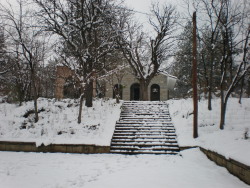
As well as rose oil production, the Kazanlak area is famous for the Thracian tombs. There are many of these dotted all around the country but there is a very high concentration of them around Kazanlak and a number have been excavated and are open to the public.
These look like giant mole hills, but actually house small stone structures, used to bury and commemorate the dead in ancient times.
Whilst the presence of the tombs and the Thracian settlements had been known about for many years, it was not until 1992 that serious excavations began on the tombs.
In Kazanlak itself, there is the original Thracian tomb with wall murials (20 levs entrance) and a full size replica (6 levs entrance fee) with details of the tomb and others in the area.

An intact tomb was found near Shipka which was the burial chamber of a mid 4th century BC ruler and many gold and silver artifacts were discovered (now in Kazanlak museum).
Another tomb nearby was found to contain the bones of a horse, sacrificed in all its elaborate harnesses and dressings. Another intact tomb was discovered in 1993 near Shipka and this was the largest to date, it comprised 6 chambers and was 100sqm.
The main burial chamber was made from a single enormous granite block weighing more than 60 tonnes and in the entrance chamber to the tomb, a horse had been sacrificed and buried along with its distinguished owner.
Many more tombs were discovered throughout 1995 and 1996. Many contained gold and silver ornaments (at least those that had not been plundered earlier) and the walls were decorated with rich colours and murials depicting the life of the Thracian rulers.
Two temples were discovered, one also being the burial chamber of the great Thracian King Seuthes III, identified by a head of a statue buried at the entrance and several items bear the description ‘to Seuthes’. The tomb of Seuthus III is open to visitors (6 levs per person).
There are now several other tombs open to visitors and a brand new visitor centre.
Koprinka & Jepchevo Reservoirs
Koprinka lake is a massive reservoir close to Kazanlak. During the spring and summer, you can see swans, storks, cormorants and wild ducks along the lake shore.
There are a number of trails around the lake and in the summer you can go fishing, wind-surfing, water-skiing, hire pedal boats and jet skis or just relax on one of the beaches.
There is an ambitious project to try and uncover the ancient city of Seuthopolis, submerged under the lake and build a huge wall around it and a harbor so it will be accessible only by boat. I personally cannot see this ever happening but its a nice idea!
Jepchevo is further east of Kazanlak and is quieter than Koprinka and less developed. When the water is low you can see the old church from the village that was flooded when the reservoir was made.
Shipka Pass & Monument
The Shipka Pass is one of the main routes over the Balkans. It is famous for being the stand point of the Bulgarian and Russian troops during the 1878 Liberation War from the Turks.
An important battle took place with the 6000 Bulgarians and Russians fighting from the top of the mountain to stop the 27,000 Turkish army conquering the north of Bulgaria, as well as the south.
On the third day of the battle, the Bulgarians and Russians ran out of ammunition and had to resort to throwing rocks, tree trunks and eventually dead bodies down the hill at the attacking army.
But they managed to hold the pass and when Russian reinforcements arrived, the Bulgarians and Russians moved down the mountain and defeated the rest of the Turkish army.
A monument is built right at the top of the winding pass, which houses a military museum. You can drive so far up but then must climb hundreds of steps to reach the top.
On a clear day the views from the top across the valley below are amazing and you can see for many miles. It is also famous for the yoghurt made from Buffalo’s milk that they sell at the top.

The Russian Church
To commemorate the battle at Shipka and the Russian and Bulgarian dead, a magnificent, gold roofed church was built at the base of the pass in Shipka town.
The inside of the church is decorated with wonderful paintings and in the vault under the church, there are photographs and descriptions explaining how the church was built.
Buzludja Monument

From just outside Kazanlak, the road runs around 12km up to the top of Mount Buzludzha at 1444m above sea level. On the top you can see the strange, spaceship shaped monument built to commemorate the foundation of the Bulgarian Socialist Party in 1891, following a secret meeting there.
In 1868 it was the place of the final battle between Bulgarian rebels led by Hadji Dimitar and the Ottoman Empire. The Buzludzha Monument was opened in 1981, but is no longer maintained by the Bulgarian government and is locked up and in a state of disrepair.
There are two massive iron fists holding flames lower down from the monument and then you can hike up to the main building, which resembles a spaceship. It is possible to gain entry, although it is a little dicey with broken glass everywhere and large drops where the floors have fallen in.
Inside you can see the remains of the mosaics that once covered all the walls and ceilings, depicting the main communist leaders.
Buzludja is also a small ski area, about 20 minutes drive from Kazanlak, up the mountain.
Mineral Spas
There are several mineral spas in the area. Pavel Banya is the main spa resort with many balneology centres and a lot of private hotels and guesthouses.
Many foreigners come here to treat their diseases, especially orthopaedic complaints. Yagoda, about half way between Kazanlak and Stara Zagora has an outdoor mineral pool (the old indoor heated baths are now closed) and there are also a couple of newer hotels with swimming pools that use the mineral water with more development ongoing.
There are also mineral spas just outside the city. The small mineral spa resort of Stara Zagora is located around 15km to the west of the city in the forested hills.
The spa area was first developed by the Romans in the 2nd Century AD and during communist times was a popular place for companies to have rest homes for their workers.
A number of these have now been renovated and converted into hotels, including two 3 and 4 star hotels with pool complexes and massage facilities.
The area is a great place to relax and enjoy walks in the hills. A few kilometres up from the spa area, a dirt track (just about accessible by car) leads to a pilgrimage site know as the ‘Madonna’s footprint’.
This is a large rock protruding from the earth and it is said that if you squeeze through the crack in the rock and climb out the top, your wish will come true. The area is supposed to be a central point for the earth’s magnetism and is a place of worship.
A tiny church has been erected by the rock. However, more impressive is the ancient Sarcophagus lying to the right of the rock.
This area was destined for a huge resurgence and redevelopment scheme with a planned golf course and all sorts.
A number of new four star hotels offering massage and health treatments (full body massage lasting an hour for just 60 BGN or around 25 GBP – definitely to be recommended) and sports complexes opened up but the area never really took off as was envisaged and the money dried up.
There is a lake and park with old spa baths and a large out door pool complex. In time maybe the spa baths will be renovated and put back into use and the lake cleaned out. For now it is a very pleasant place to go walking and for a meal and to un-wind.
Rose Oil Distillery

In the village of Tarnicheni, about a 50 minute drive from Stara Zagora and 20 minutes west from Kazanlak, there is a working rose distillery (and lavender after rose season) which you can visit with prior arrangement.
It has been renovated and restored into a beautiful working museum. You can see the old way they used to distill the rose oil, the still working but older rose distillery and the new more efficient distillery where hundreds of bags of rose petals are brought in and put into the distillation vats.
You can purchase rose oil directly from the distillery here. Tours can be organised by prior arrangement and can include a traditional Bulgarian meal and a tour of a wood carver’s work shop. Cost around 50 levs per person.
The Balkans
The Central Balkan National Park has 9 reserves that cover around a third of the National Park and are a haven for wildlife and wild flowers.
The Park is one of the few remaining locations in Europe that provides sanctuary to rare and endangered animals, such as the wolf, marten, otter, wild cat, Geoffrey’s bat, barbastelle, Schreiber’s bat, common dormouse, Balkan chamois, imperial eagle, corncrake, and ring ouzel.
The Park is the world’s most significant habitat of the semi-collared flycatcher, white-backed woodpecker, Bechstein’s bat, souslik, and mountain molerat.
The Central Balkan National Park is home to 59 species of mammals (66% of all mammalian species in Bulgaria); 14 species of reptiles (40% of Bulgarian reptilian species); 123 species of nesting birds (45% of Bulgaria’s ornithological fauna); and 8 amphibian species (half of all Bulgarian amphibian species).
Twenty-ones of the vertebrate species within the Park are endangered globally; 80 vertebrate species have been placed under special protection in the Park. [Information from the VisitCentralBalkan Site]
There are many mountain chalets offering accommodation and food and hiking trails in the park.
